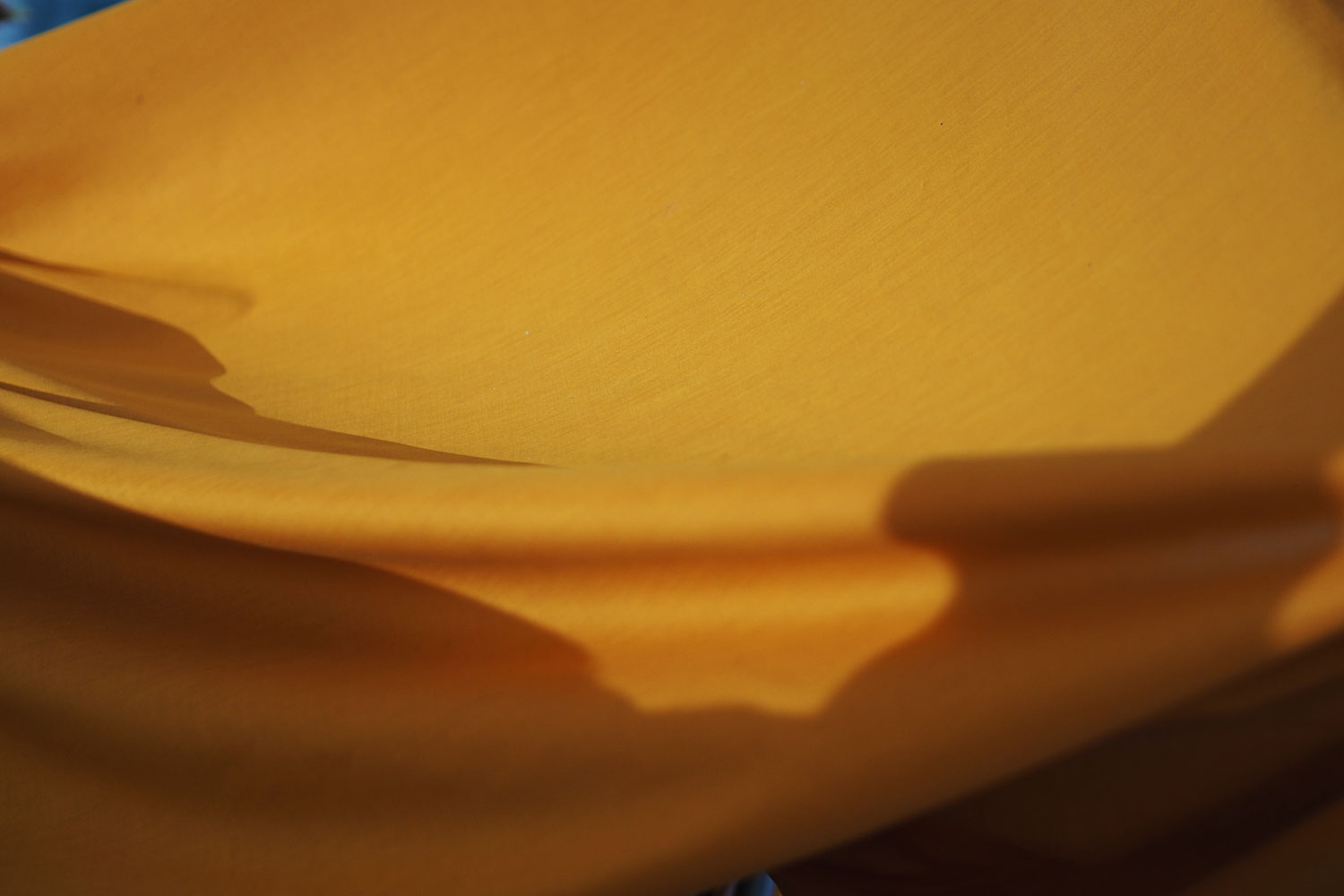In an open hall at Wat Chak Daeng in Samut Prakan’s Phra Pradaeng district, Thitinan Ratsameesang skilfully moves her hands and feet on a wooden loom to weave cloth. The material looks like fine white cotton yarn, but it is not.
“I’m weaving the world’s first saffron robe made of recycled plastic drinking bottles,” she said with a big smile. Thitinan has spent about two months weaving the cloth. She is one of the regular volunteers who help the temple’s recycling project that turns plastic bottles into fabrics.
The project is part of “Our Khung Bang Krachao” scheme initiated by the Chaipattana Foundation last year. Its aim is to sustainably develop the green zone, dubbed “Bangkok’s green lung”. The foundation partnered with about 30 private companies who transfer their expertise and offer financial support to locals in six areas.
PTT Global Chemical worked with Wat Chak Daeng to introduce the recycling project which today is run by Chak Daeng Community Enterprise. All thanks to the efforts of Phra Maha Pranom Dhammalangkaro, the temple’s acting abbot, who has separated and managed waste in the temple for more than 13 years.
“I like to keep the temple clean so I have tried many ways to make our visitors and monk students understand how they can simply contribute to the temple’s cleanliness by separating garbage,” said the monk.

Phra Maha Pranom Dhammalangkaro.
The temple has separate bins for paper, plastic bottles, plastic bags and other rubbish. The paper is stacked for sale while plastic bags are cleaned and turned into fuel. Organic waste such as dry leaves and leftover food are transformed into organic fertiliser.
In the past, plastic bottles were just collected for sale because the temple didn’t have the expertise to transform them into textiles. This was despite the fact that Phra Maha Pranom found out about the technology 10 years ago when he visited a recycling factory in Taiwan that transformed polyethylene terephthalate (PET) bottles into eco-fabrics.
“I was interested in the project right away. It was an aspiration and I wanted to make it happen, but at that time I didn’t know where to start or how to find a budget for such a huge investment.”

From left: Locals work at the recycled area; Thitinan Ratsameesang weaves the eco-textile which will be later dyed with saffron colour and turned into a monk robe.
The chance came when PTT GC visited the temple last year. The company has knowhow and technology that is proving a perfect match with the monk’s longheld plan.
The process of making eco-fabrics starts in the temple. Volunteers unload donated bottles in the temple’s recycling area. They sort out PET bottles, clean them and press them in a machine that makes large bales ready for transportation.
The process of making the fabrics involves four factories. It starts with changing PET bottles into plastic flakes and chips, followed by producing polyester thread and mixing it with cotton and nano zinc oxide particles to create soft eco-friendly yarn. The yarn is then dyed saffron and woven into cloth. The cloth is sent to the temple for the final process which is to turn it into monks’ robes. “The earlier versions of the recycled bottle textiles are a far cry from the present version. We had trial and error for eight months before we launched the finished product in the media this year,” said Phra Maha Pranom.
The cloth has 34% recycled polymer, 43% cotton and 23% nano zinc oxide particles. Thus the current version is soft, light and comfortable to wear. It dries easily and doesn’t trap sweat.
“I don’t have to wash it every time after use. I can let it dry and reuse it. The robe doesn’t have an unpleasant smell of sweat,” he said.
Producing a 2-metre-long cloth consumes about 15 x 600cc PET bottles.

From left: Supakorn Sae-Jeng will use a machine to press PET bottles into a cubic bale; Thitinan Ratsameesang shows other products made of eco-fabrics.
Sixty bottles of PET are needed to make a set of tri chiwon. The set includes sabong (sarong), angsa (an inner garment worn across the shoulder) and chiwon (robe). Prices range from 1,500 baht for one robe to 5,000 baht for a set of tri chiwon. The highest price is 20,000 baht for a traditional handwoven robe.
The prices reflect the cost, said Phra Maha Pranom. “Although the prices are at least five times higher than typical robes, demand is high. It is because people want to support the eco-friendly saffron robes that can’t be found anywhere else but Wat Chak Daeng.”
“I am glad to be part of this innovation,” said Thitinan who helps to stitch the saffron robes. The project also helps
other people in her community. Disabled people in particular can earn income by joining the recycling programme.
Besides making saffron robes, Chak Daeng Community Enterprise produces cloth bags, blankets, yellow polo shirts, T-shirts and blue sarongs printed with traditional patterns.
The temple’s eco-fabric project is widely known about and praised. Nevertheless, despite lauding the achievements so far, Phra Maha Pranom hesitates to declare the programme an outright success.
“The project can create a circular economy, but the technology can’t yet be transferred to locals,” he said. “What we have done so far is only the first step to show people that what they throw away can be reused and recycled. I hope we can do something more in the future.”

